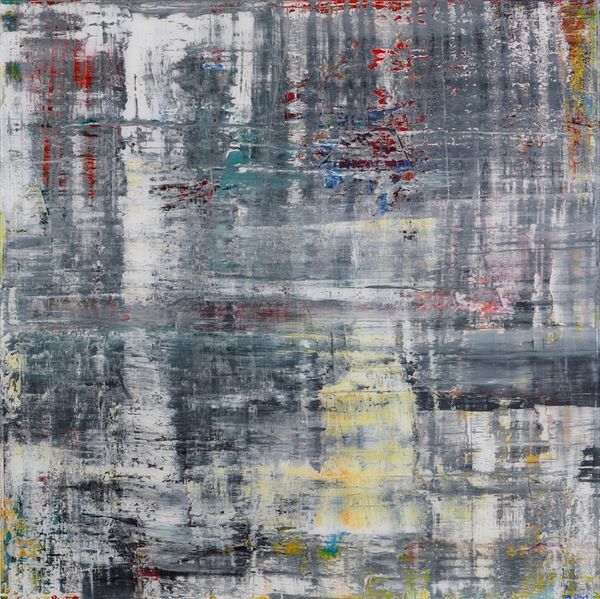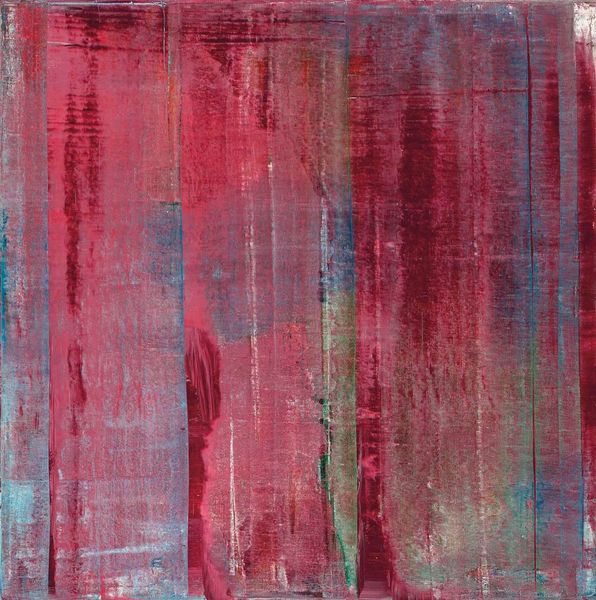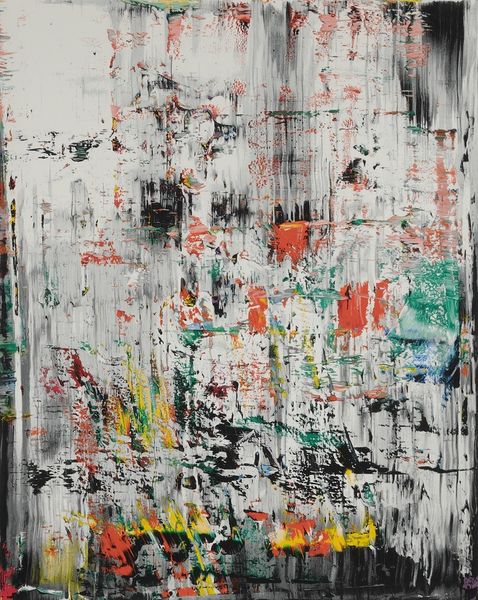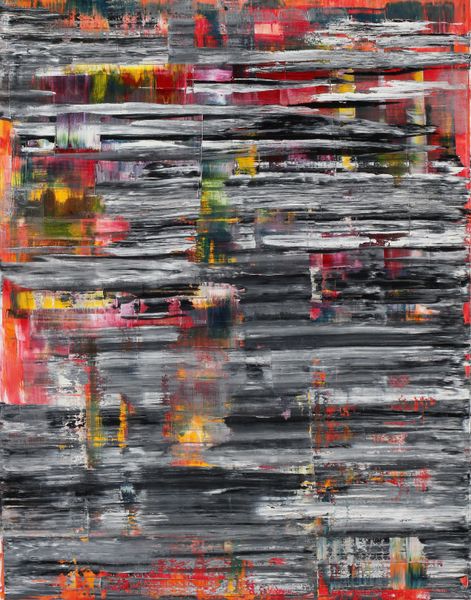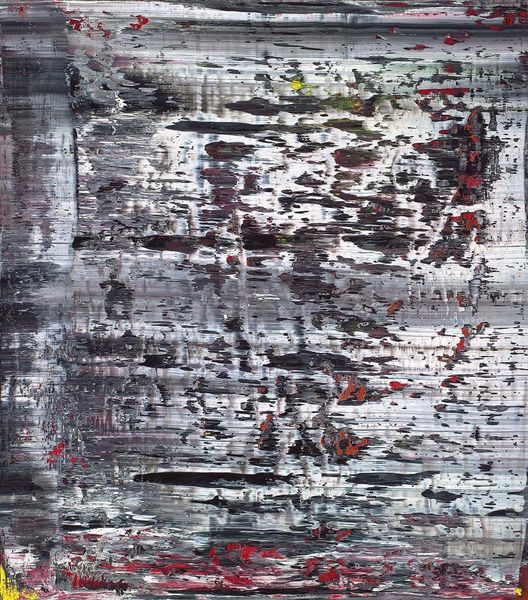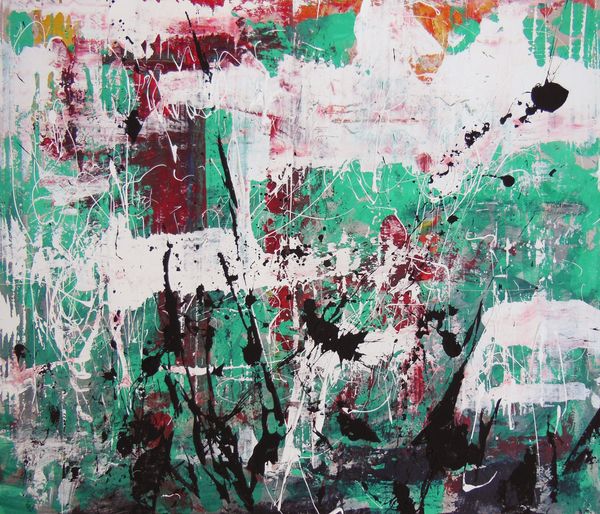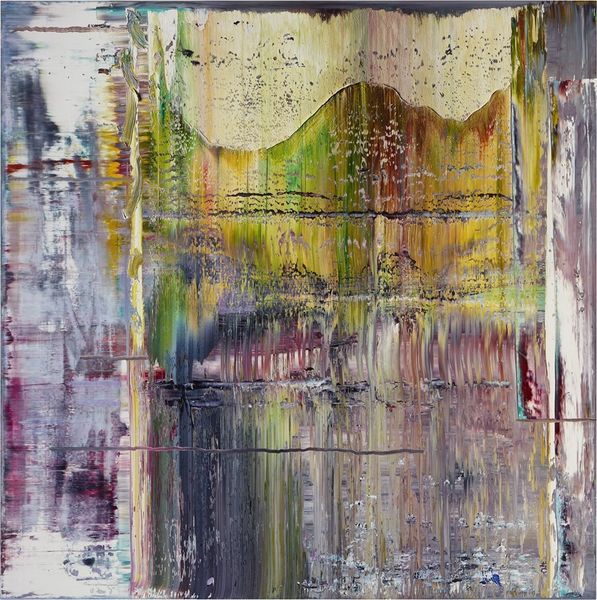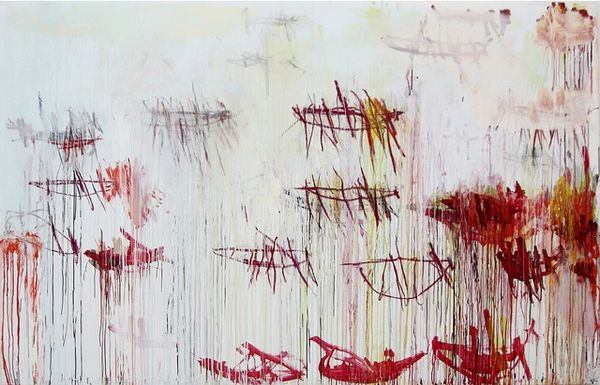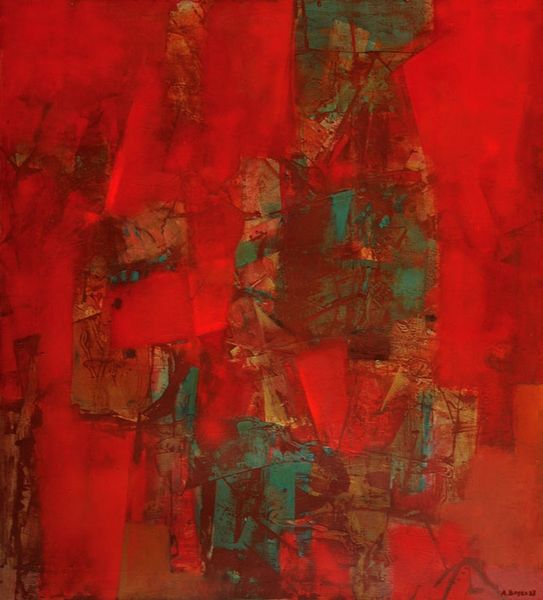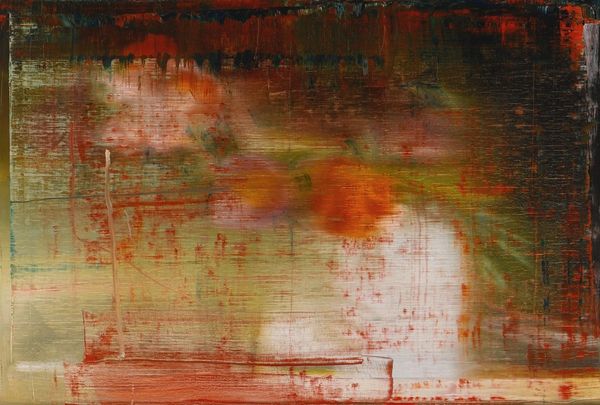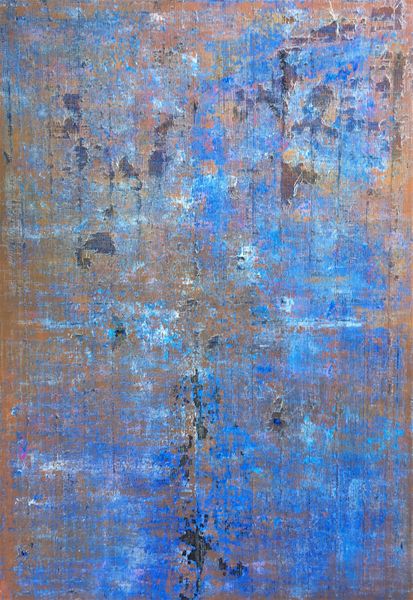
#
capitalist-realism
Copyright: Modern Artists: Artvee
Editor: Here we have Gerhard Richter’s "Cage 4," from 2020. It's an acrylic paint on canvas, right? It looks to me like a storm, kind of chaotic and unsettling, yet also contained somehow. What do you see in this piece? Curator: I see a continuation of Richter’s exploration of abstraction as a critical response to representation in the media-saturated 20th and 21st centuries. Looking at it through the lens of cultural history, the deliberate scraping and layering feel like a rejection of the smooth, easily consumed imagery we're constantly bombarded with. It also has a tie to the Cage series for those pieces where the name originated from the composer John Cage. What I find striking is the tension between chance and control; does this reflect society's tensions between freedom and control? Editor: So, the act of scraping away the paint is a commentary on how media shapes our perceptions? I never thought about it that way. Curator: Exactly! It also plays with the power dynamics within the art world itself. Richter's controlled chaos can be seen as challenging traditional notions of artistic skill and authorship, asking questions about who gets to define what is aesthetically valuable. Does the institution, by showcasing such works, attempt to tame its potentially subversive message? Editor: I get it. It makes me wonder how much abstract art is truly "free" from social and political forces. The piece is not just paint on canvas. Curator: Precisely! The museum displaying it changes its perception. Consider what that space and power means to the work itself. I also wonder how future audiences will perceive Richter’s work, considering our evolving digital landscape and increasing exposure to diverse visual stimuli. Editor: This has changed how I see abstract art in general! Thanks! Curator: You're welcome. Remembering the art in history's cultural milieu truly helps our understanding of each artwork.
Comments
No comments
Be the first to comment and join the conversation on the ultimate creative platform.
